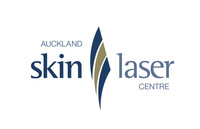Phone (09) 520 3200
Healthlink EDI: stjonsmt
Email Address mail@skinlaser.co.nz


Phone (09) 520 3200
Healthlink EDI: stjonsmt
Email Address mail@skinlaser.co.nz
Injection therapy of unwanted blood vessels (sclerotherapy)
Unwanted blood vessels - smaller ones are called spider veins - have a red or bluish colour and appear on the surface of the body, particularly the legs and occasionally the face or elsewhere.
They may be visible as short, unconnected lines each about the size of a large hair, they may be connected in a scraggly, “sunburst” pattern, or they may resemble a spider web or tree with branches. In some people, they occur in a small area and are not particularly noticeable. In others, they may cover a large area of skin and be quite unsightly.
Larger unwanted blood vessels may be raised above the skin surface and serpentine; they may occur in association with spider veins. These large veins are also called varicose veins, but differ from the more commonly known varicose veins which frequently occur in association with a poorly working valve in a large vein.
A characteristic of unwanted blood vessels in some sufferers is occasional pain, ranging from a dull throbbing pain to a burning sensation.
Though unwanted blood vessels do carry blood, the great majority, especially spider veins, are not necessary to the circulatory system. Thus, if their presence is distressing, they can be treated by injection of a solution that will cause them to disappear or at least become much smaller.
What causes these blood vessels to become visible?
The cause is not known, except that in many cases they seem to run in families. Identical twins may be affected in the same area of the body and to the same extent. The condition can also occur as part of a large number of different diseases, both genetic and non-genetic.
Spider veins occur in both men and women, but more frequently in women. The hormone oestrogen may play a role in their development because puberty, birth control pills or pregnancy often seem to bring them on. During pregnancy the enlarged uterus may restrict blood flow, contributing to their development. They may also occur after a blow to a certain area of the body or as a result of wearing tight girdles or hosiery held up with tight rubber bands. In addition, spider veins may occur in association with underlying large varicose veins.
When they occur on the face, spider veins may be related to chronic sun exposure or a condition known as rosacea. They tend to occur on either the nose or the cheeks of fair skinned persons.
Can they be prevented?
Wearing support stockings may prevent some unwanted blood vessels from developing in some people. Maintaining a normal weight and exercising regularly may also be helpful. Protection from the sun is important to reduce the number of unwanted vessels on the face.
How are unwanted blood vessels on the legs treated?
In the majority of cases, a procedure called sclerotherapy is used, in which a solution, called a sclerosing solution, is injected with a very fine needle directly into the blood vessel. This procedure has been used for spider veins since the 1930s and long before that for larger veins. The solution irritates the lining of the vessel, causing it to swell and stick together and the blood to clot. Over a period of weeks, the vessel turns into scar tissue that fades from view, eventually becoming barely or not at all visible.
Depending on its size, a single blood vessel may have to be injected more than once, some weeks apart, but in any one treatment session a number of vessels can be injected. The solutions used vary somewhat with the size of the vessel to be injected. Your dermatologist will decide the solution that is best for your particular case.
Occasionally larger varicose veins underlie spider veins. These vessels may be treated before the spider veins, either by sclerotherapy followed by compression or by a surgical procedure carried out by a vascular surgeon. Alternatively the spider veins may be treated by sclerotherapy as usual without worrying about the varicose veins unless they become troublesome.
How successful is sclerotherapy?
After several treatments, most patients can expect a 50-80% improvement in treated vessels. However, the fading process is gradual and perfection is seldom achieved.
Can sclerotherapy be used on all skin types?
Yes. All skin types and skin colours respond equally well.
How much does treatment cost?
Charges to the patient vary with the area to be treated and the number of treatments necessary. More than one treatment session is almost always necessary.
Will insurance cover the treatment of unwanted blood vessels?
Insurance coverage varies. If the treatment is solely for cosmetic reasons, it may not be covered. Sometimes, a second doctor’s opinion, laboratory studies or photographs is required by insurance companies before treatment is begun.
Are there side effects to sclerotherapy?
There are a number of possible side effects, including the following:
Will treated veins recur?
Larger veins are likely to recur unless support hosiery is worn. Spider veins may recur. Often, however, it may seem that a previously injected vessel has recurred, when in fact a new spider vein has appeared in the same area.
Is a history of blood clots in the lungs or legs a contraindication to treatment?
Not necessarily, but the procedure must be done with caution to minimise the risk of blood clots.
How are spider veins on the face treated?
These are often better treated with the Vbeam or copper bromide lasers than by using sclerotherapy.
What do I do after treatments?
Depending on various factors, such as the size of the blood vessels injected, patients may be instructed to put their legs up for an hour or two and then walk. Others are asked to walk immediately. All patients are instructed to walk a good deal in the days following the procedure so that blood will be pushed through other vessels.
In addition, the injected areas will be taped and patients may be asked to “compress” the treated vessels by wearing support hosiery; this may help seal the treated vessels, minimise the accumulation of trapped blood under the skin and the risk of hyperpigmentation, and reduce the possibility of recurrence.
Between treatments, it may be helpful to wear compression or support hosiery that is properly fitted (not too tight), especially for people who must be on their feet a lot.
https://www.healthpoint.co.nz/private/dermatology/dr-paul-le-grice-auckland-skin-laser-centre/